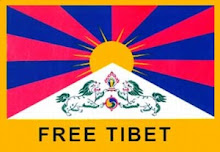 «Co-produced by bassist Bill Laswell and Gambian griot Foday Musa Suso, this album delves into the West African roots that inspired their fusionary Mandingo project. Ancient Heart features recordings of both of Gambia's two major ethnic groups, the Mandinka and Fulani. But while the 11 songs are fairly true to tradition, the approach is updated by recording the musicians in ensembles rather than the usual solo setting. All in all, this is an extremely uplifting album that features some truly amazing performances.» (AMG)
«Co-produced by bassist Bill Laswell and Gambian griot Foday Musa Suso, this album delves into the West African roots that inspired their fusionary Mandingo project. Ancient Heart features recordings of both of Gambia's two major ethnic groups, the Mandinka and Fulani. But while the 11 songs are fairly true to tradition, the approach is updated by recording the musicians in ensembles rather than the usual solo setting. All in all, this is an extremely uplifting album that features some truly amazing performances.» (AMG)«Gambia is the home of numerous ethnic groups, among them the Mandinka and the Fulani. the Mandinka are the westermost branch of the Manding people, descendants of the great Mali empire founded by Sunjata Keita in the 13th century that include the Bambara, Malinke, Dyula and Soninke among others. The Mandinka are famed for their virtuosity on the kora, a 21-string harp-lute with a large gourd resonator that is featured on this recording. […] For the Mandinka jali (griot) it is the instrument of choice. […] The Fulani are a semi-nomadic people who may be found in most of the countries of west Africa and the Sahel. renowned as fierce warriors and able horsemen, they were early traders with the Arabs. […] By tradition, the Fulani were cattle herders and, perhaps because of their wandering nature, their musical instruments tend to be small and transportable. […]
This recording presents a rich tapestry of Mandinka and fulani music. While the songs are all in the tradition mold […] the assembly of such large ensembles is a fairly recent phenomenon. […] Since the recording was done on location in Mr. Suso’s compound in Birkama, Gambia, there were all manner of extraneous noises to deal with! The resultant sound is truly a triumph of teamwork between musicians and engineers and should appeal to listeners on both sides of the Atlantic for it is both stepped in tradition and thoroughly modern.» (From the Liner Notes, included in the zip).
Link in comments




















